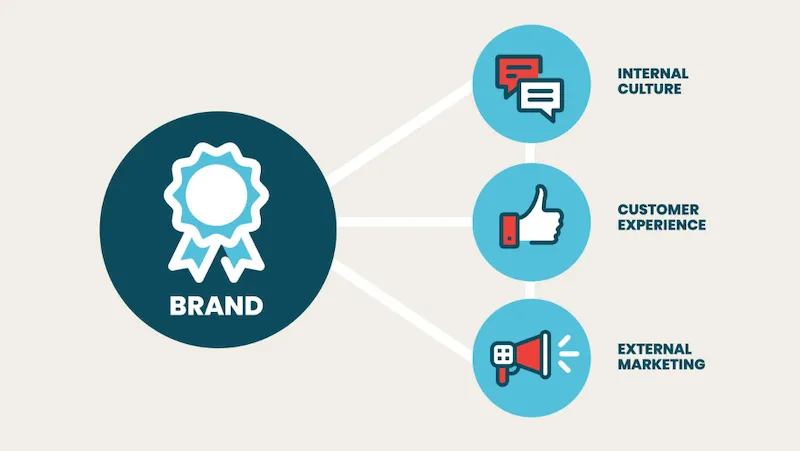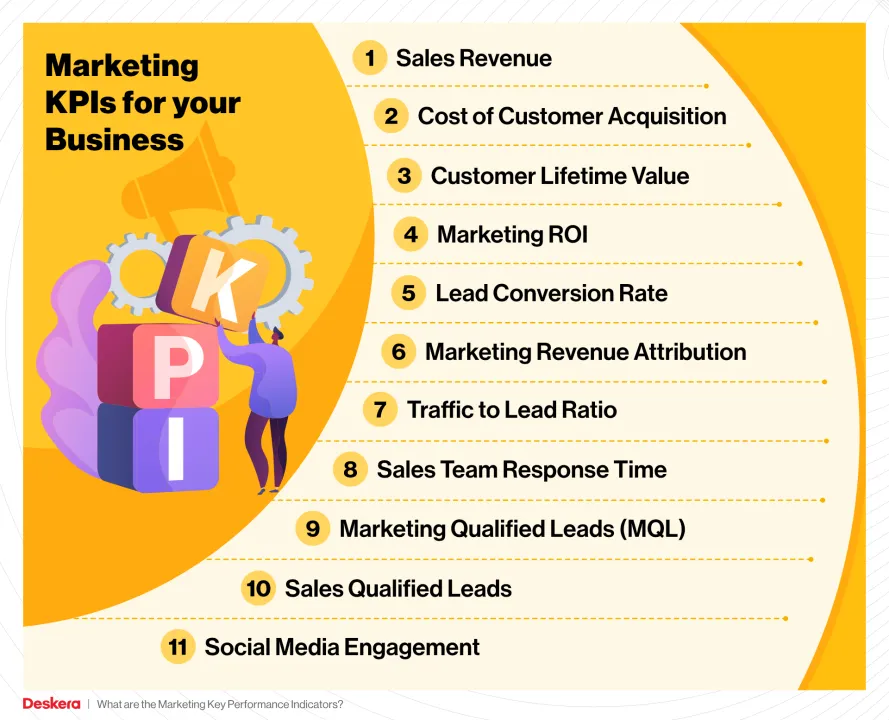Rebranding Checklist: 10 Steps for a Successful Rebrand
Statistics show that a well-executed rebrand can increase revenue by up to 23%. This striking figure underscores the immense potential of rebranding as a strategic tool for business growth and transformation in the right situations.
Rebranding is far more than just a fresh coat of paint for your company’s image. It’s a critical strategic decision that can revitalize your entire business, helping you stay relevant in evolving markets and amid business expansion opportunities. When done right, rebranding can breathe new life into your brand identity, allowing you to connect with new audiences while reinforcing your reputation and relationship with existing customers.
The benefits of a successful rebrand are multifaceted:
- Reinvigorates your brand’s identity, making it more appealing and memorable to your target market
- Allows you reach new demographics, expanding your customer base
- Opens up fresh revenue streams
- Ensures you remain competitive and aligned with current market trends and consumer expectations
However, the key to reaping these benefits lies in a well-planned, comprehensive approach. Rebranding is a complex process that touches every aspect of your business, from your visual identity to your core messaging and even your company culture. It requires careful consideration, strategic planning, and meticulous execution.
That’s why we’ve created this step-by-step rebranding checklist. By following these 10 crucial steps, you can navigate the rebranding process with confidence, maximizing your chances of success and avoiding common pitfalls along the way. Whether you’re considering a minor brand refresh or a complete overhaul, this guide will help you chart a clear path forward.
Step-by-Step Rebranding Checklist
Let’s dive into the essential steps for a successful rebrand.
Step 1. Assess Your Current Brand
Before embarking on a rebranding journey, it’s crucial to thoroughly evaluate your existing brand. This assessment provides a solid foundation for your rebranding efforts and helps identify areas that need improvement.
- Evaluate your existing brand identity (logo, color palette, tagline, etc.) According to a study by Lucidpress, consistent brand presentation across all platforms can increase revenue by up to 23%. Assess the usability, flexibility, psychology, and historical evolution of your visual brand.
- Analyze brand perception and equity among customers, employees, and the market. A survey by Edelman found that 81% of consumers need to be able to trust a brand to buy from them, highlighting the importance of understanding your brand’s current perception. Market research and strategic stakeholder interviews are insightful tools to collect qualitative data.
- Identify strengths, weaknesses, and areas for improvement. 90% of Fortune 500 companies practice competitive intelligence and 70% of large enterprises believe that having competitive intelligence in the past would have increased the effectiveness of previous campaigns.
During this assessment phase, conduct thorough market research, gather customer feedback, and perform internal audits. This comprehensive evaluation will provide valuable insights into your brand’s current standing and guide your rebranding strategy.
Remember, a clear understanding of your current brand position is essential for setting realistic goals and measuring the success of your rebranding efforts. This initial step lays the groundwork for all subsequent phases of your rebrand.
2. Define Your Rebranding Objectives
After assessing your current brand, it’s crucial to clearly define your objectives for the rebranding process. This step will guide your entire rebranding strategy and help ensure your efforts are focused and measurable.
- Determine the primary goals and drivers for the rebranding. Your rebranding objectives might include:
- Repositioning your brand in the market
- Modernizing your brand image
- Merging multiple brands under one umbrella
- Entering new markets or targeting new demographics
- Overcoming negative brand associations
- Establish key performance indicators (KPIs) to measure success. Set specific, measurable goals for your rebranding efforts, such as:
- Increase in brand recognition (measured through surveys)
- Growth in market share
- Improvement in customer loyalty scores
- Boost in website traffic or social media engagement
- Increase in sales or revenue
When defining your objectives, ensure they align with your overall business strategy. Your rebranding goals should support and enhance your company’s long-term vision and mission.
Remember, successful rebranding is not just about changing your logo or color scheme. It’s about aligning your brand with your business objectives and customer expectations. By clearly defining your rebranding objectives and establishing measurable KPIs, you create a roadmap for success and a means to evaluate the effectiveness of your rebranding efforts.
3. Research Your Target Audience
Understanding your target audience is crucial for a successful rebrand. This step ensures that your new brand resonates with your current customers while potentially attracting new ones, who often fit similar demographics and profiles.
- Conduct customer surveys, focus groups, and market analysis. Gather comprehensive data about your audience through various research methods:
- Online surveys to collect quantitative data
- Focus groups for qualitative insights
- Social media listening to understand brand perception
- Market analysis to identify trends and opportunities
- Develop detailed buyer personas to guide the rebranding process. Create in-depth profiles of your ideal customers, including:
- Demographic information (age, gender, income, location)
- Psychographic details (values, interests, lifestyle)
- Pain points and challenges
- Purchasing behavior and preferences
- Brand interactions and touchpoints

Source: Nestify.io
Over 90% of companies exceeding their lead and revenue goals segment their database by buyer persona according to Marketing Insider Group.
A study by Epsilon found that 80% of consumers are more likely to make a purchase when brands offer personalized experiences. Detailed buyer personas enable this level of personalization.
When conducting your research, pay attention to both your current customer base and potential new markets you want to target. Look for gaps between your current brand perception and your audience’s expectations. This insight will be invaluable in shaping your new brand identity.
Remember, your rebranded identity should speak directly to your target audience’s needs, preferences, and aspirations. By investing time in thorough audience research and persona development, you’ll create a strong foundation for a rebrand that truly resonates with your market.
4. Conduct a Competitive Analysis
A thorough understanding of your competitive landscape
is crucial for a successful rebrand. This step helps you position your brand effectively and find unique ways to stand out in the market.
- Examine how competitors have approached branding:
- Study recent rebrands in your industry
- Analyze the visual elements, messaging, and positioning of competitor brands
- Evaluate the success or failure of their branding efforts
- Look for patterns or trends in branding approaches within your sector
A study by Kantar found that brands that successfully differentiate themselves are 3.5 times more likely to grow their market share. Understanding competitor strategies can help you identify gaps and opportunities.
- Identify opportunities to differentiate your brand in the market:
- Pinpoint areas where competitors are underperforming or overlooking customer needs
- Explore unique selling propositions that set your brand apart
- Consider innovative ways to deliver value to your target audience
- Look for emerging trends or technologies you can leverage in your rebrand
When conducting your competitive analysis, don’t just focus on direct competitors. Look at adjacent industries and market leaders in other sectors for inspiration and insights. Pay attention to both what competitors are doing well and where they’re falling short.
A well-executed competitive analysis will help you avoid common pitfalls, identify market gaps, and develop a rebranding strategy that gives you a true competitive edge.
5. Develop a New Brand Strategy
With insights from your research and analysis, it’s time to craft your new brand strategy. This crucial step will define how you present your brand to the world and guide all future brand-related decisions.
- Brand Framework
- Brand Position: Define your position in the market
- Brand Truth: Articulate the reason you exist for your end users
- Brand Promise: Create a statement that joins vision and accountability to ensure consistent value delivery
- Determine the new brand identity (logo, colors, typography, imagery)
- Design a logo that reflects your brand essence
- Choose a color palette that evokes the right emotions
- Select typography that aligns with your brand personality
- Develop a visual style for imagery and graphics
- Create brand guidelines to ensure consistency
- Document proper usage of all brand elements
- Provide examples of correct and incorrect brand applications
- Include guidelines for tone of voice and messaging
- Outline how the brand should be represented across different channels

Source: WordStream.com
If you need more information on brand guidelines, we put together this guide for everything you should include in a company brand style guide.
When developing your new brand strategy, ensure all elements work together cohesively to tell your brand story. Your brand should be authentic, differentiated, and relevant to your target audience.
By creating a comprehensive brand strategy and detailed guidelines, you’ll ensure that your rebrand is implemented consistently across all touchpoints, reinforcing your new brand identity and maximizing its impact.
6. Engage Key Stakeholders
Involving key stakeholders in the rebranding process is essential for its success. Engage employees, leadership, and other internal stakeholders early on to ensure alignment and foster a sense of ownership.
By gathering feedback and addressing concerns throughout the process, you can build strong buy-in and create advocates for your new brand within the organization. This collaborative approach not only smooths the transition but also helps ensure that the rebrand resonates internally before it is launched externally.
7. Plan a Phased Rollout
A phased rollout is crucial for the successful implementation of your new brand. Start by outlining a clear timeline that details how and when the new brand will be introduced across all touchpoints.
Prioritize high-impact areas such as your website, marketing collateral, and signage, ensuring these elements reflect the new brand identity first. By rolling out the rebrand in stages, you can manage the transition more effectively, allowing for adjustments and refinements along the way. This approach also helps maintain consistency and minimizes disruption to your business operations.
As you prepare to launch your new brand, it’s crucial to update all your collateral and content to reflect your new identity. Our comprehensive checklist will guide you through every aspect, ensuring consistency and helping you avoid common oversights. Download the checklist now and make your rebrand a seamless success.
8. Train and Educate Employees
A successful rebrand hinges on your team’s ability to internalize and represent the new brand. It’s essential that all employees are well-informed and aligned with the new direction to ensure consistency in customer interactions.
- Ensure Understanding: Begin by thoroughly educating all staff on the new brand identity, including its values, messaging, and goals.
- Equip for Communication: Provide employees with the necessary tools, such as brand guidelines and communication templates, to help them articulate the new brand confidently and consistently.
- Provide Resources: Distribute resources like FAQs, internal newsletters, and training sessions to reinforce brand knowledge and address any uncertainties.
- Ongoing Support: Establish channels for ongoing support and training to help employees navigate the transition smoothly and uphold the new brand standards in their roles
By investing in thorough training and education, you empower your team to become effective brand ambassadors, ensuring that your rebrand is embraced internally and externally, creating a unified brand experience.
9. Launch the Rebrand
The launch of your rebrand is a pivotal moment that sets the tone for how your new brand will be received by the market. A well-executed, strategic launch can generate excitement and momentum, ensuring that your rebrand makes a strong and lasting impression.
- Execute a Strategic Campaign: Plan a high-impact launch campaign that aligns with your rebranding objectives. Consider timing, key messages, and target audiences to maximize the impact of your launch.
- Leverage Online Channels: Utilize digital platforms such as social media, email marketing, and your website to reach a broad audience. Create engaging content that tells the story of your rebrand and highlights the value it brings to your customers.
- Utilize Offline Channels: Complement your online efforts with offline tactics like press releases, events, and printed materials. These traditional methods can help reinforce your new brand identity and reach audiences who may not be as active online.
A successful launch ensures that your rebrand resonates with both existing customers and potential new ones. By strategically leveraging both online and offline channels, you can amplify your new brand’s presence and create a cohesive, impactful introduction to the market.
10. Monitor and Measure Success
After the rebrand is launched, the work doesn’t stop. Continuously track your key performance indicators (KPIs) and gather customer feedback to assess how well the new brand is resonating with your audience. Regularly review these metrics to identify areas for improvement and make adjustments as needed to maintain your brand’s relevance and effectiveness. This ongoing monitoring ensures that your rebranding efforts continue to support your business objectives and adapt to any changes in the market.

Source: Ali Sedighi, LinkedIn
Key Takeaways
Rebranding can be a complex process that requires careful planning, strategic execution, and ongoing evaluation. By following this rebranding checklist, you can navigate the journey with confidence, ensuring that each step is aligned with your business goals and sets your brand up for long-term success. Remember, a well-planned and comprehensive approach to rebranding can transform your business, enabling you to connect with new audiences, reinforce your relationship with existing customers, and drive growth.
If you’re considering a rebrand, Pyxl is here to help. Our team of branding experts can guide you through every step of the process, ensuring that your rebrand delivers the impact you need. Partner with Pyxl and let’s craft your brand together.
Updated: May 13, 2025
 Julia Smeltzer
Julia Smeltzer Kati Terzinski
Kati Terzinski Erin Murray
Erin Murray